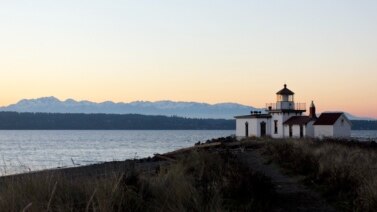Thousands of delegates from around the world gathered this month in northeast Japan for a United Nations conference on disaster relief. Four years ago, the area was hit by a tsunami that caused damage to the Fukushima nuclear power center.
During the conference, local officials transported some of the delegates throughout Fukushima to show them how it is recovering. Officials also told the delegates that food from the area is safe.
Until the nuclear accident in 2011, the Fukushima area was well-known and respected in Japan for the food its farmers grew and the seafood its fishermen caught. But since the disaster, many people think of Fukushima only as a place that suffers from nuclear contamination.
Kazuhiro Watanabe grows strawberries. Because he uses glasshouses to grow the berries indoors, the crop is ready to eat even in early spring. But he has had trouble selling his crop in recent seasons because he grows them in Fukushima. His farm is far away from the area’s damaged nuclear power plant, but being linked to Fukushima has hurt him.
He says he was in the middle of the strawberry growing season when the earthquake hit. He lost half of his customers.
But Mr. Watanabe says his business is now slowly improving.
He says the most recent studies show sales of produce from Fukushima are now about 70 to 80 percent of the sales of produce from other parts of Japan. He says people are slowly changing their mind about the safety of the area’s food.
At the Fukushima Agricultural Technology Center, workers put fish, chicken and vegetables in radiation detectors made in the United States. All food from the area is tested for radiation. Officials say Japanese safety standards are ten times stricter for levels of radioactive cesium than American or European standards.
Katsumi Komaki is the manager of the technology center.
He says the center has cooperated with such organizations as the International Atomic Energy Agency to learn how much radioactivity there is in rice and other food from the area.
The delegates also visited a factory where workers make more than 3,000 school meals a day. Atsuko Kano is the spokesperson for the factory. She says the meals are tested for radiation.
She says the factory puts the results of the radiation testing on the Fukushima city website. And she says every parent is given information about what is in the lunches.
Officials in Fukushima are working hard to help the community return to normal. One of them is Mayumi Suzuki, who led the delegates through the area.
“The image of Fukushima is not really good in the world. But this is my dream that I want to tell all the people what’s really happening in Fukushima and that’s why I’m organizing such a tour.”
Independent monitoring from environmental groups has shown that some areas of the city have high radiation levels. But there has been no evidence that there is radiation in the area’s crops and fish.
I’m Christopher Jones-Cruise.
Henry Ridgwell reported this story from Fukushima, Japan. Christopher Jones-Cruise wrote it for VOA Learning English. Jim Tedder was the editor.
Words in This Story
contaminated(ion) – n. the state of being dangerous, dirty or impure because something harmful or undesirable has been added
produce – n. fresh fruits and vegetables
strict(er) – adj. demanding that people obey rules or behave in a certain way
cesium – n. a metal that may be stable (nonradioactive) or unstable (radioactive)
tour – n. an activity in which you go through a place (such as a building or city) in order to see and learn about the different parts of it
monitor(ing) – v. to watch, observe, listen to or check (something) for a special purpose over a period of time
Would you eat food from Fukushima? We want to hear from you. Write to us in the comments section.
